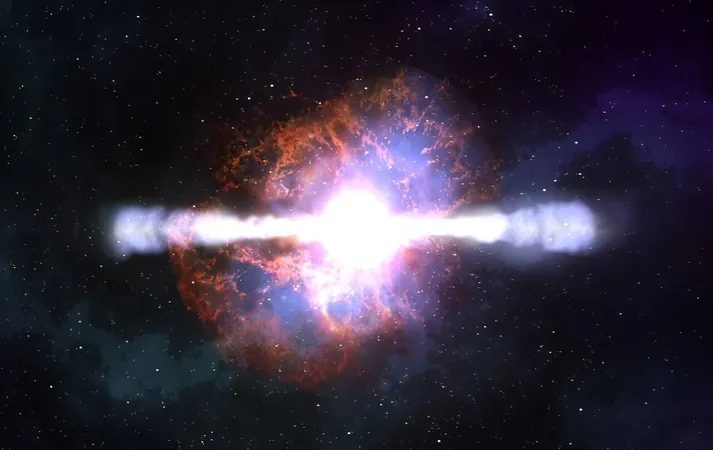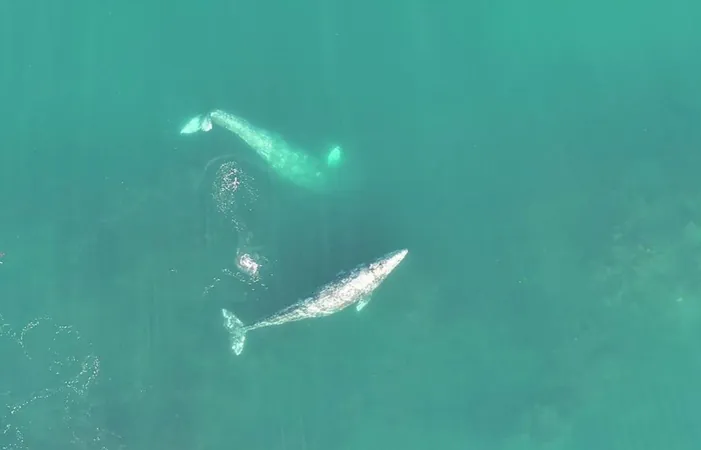
How Cosmic Explosions Shaped Life on Earth: The Surprising Influence of Nearby Supernovae
2024-09-25
Introduction
When massive stars erupt into brilliant supernovae, they unleash more than just stunning displays of cosmic light; they generate heavy elements that are vital to life. Among these elements is iron, ejected into space and, eventually, deposited on Earth. Recent scientific findings reveal that our planet harbors significant deposits of the iron isotope 60Fe, remnants of nearby stellar explosions occurring approximately 2 to 3 million years ago and between 5 to 6 million years ago.
The Influence of Supernovae on Earth's Biological History
But what does this galactic drama mean for life on our planet? A study featured in The Astrophysical Journal Letters, spearheaded by Caitlyn Nojiri from UC Santa Cruz, explores the profound implications of these supernovae on Earth's biological history through enhanced cosmic radiation levels following such explosive events. The insights encapsulated in the paper, aptly titled "Life in the Bubble: How a nearby supernova left ephemeral footprints on the cosmic-ray spectrum and indelible imprints on life," delve into a captivating cosmic connection.
Cosmic Radiation Variation
According to the researchers, the radiation which blankets our planet varies as the solar system meanders through the galaxy, significantly influenced by nearby supernovae. The paper’s authors assert that these astounding events can elevate radiation levels on Earth dramatically, potentially driving evolutionary changes and adaptations in life forms.
Correlation with Supernova Events
The more recent accumulation of 60Fe is directly linked to a supernova event, while the older deposits resulted from Earth traversing a bubble produced by massive OB stars. These stars, short-lived and immensely hot, expel powerful stellar winds that create expansive bubbles of ionized gas in interstellar space. Our solar system rests within the Local Bubble, a colossal structure nearly 1,000 light-years across, which was formed over several million years through repeated supernova activity.
The Dynamic Nature of Local Bubble
Remarkably, at least nine supernovae have erupted in the past 6 million years alone, contributing to the dynamic nature of the Local Bubble. The researchers gathered data from multiple supernova occurrences, estimating that the increased radiation could lead to significant biological effects, including genetic mutations instigated by double-strand breaks in DNA. These mutations might not spell extinction but can foster diversity among species, creating fertile ground for evolution.
Virus Diversification and Cosmic Explosions
Interesting correlations emerge as well: a 2024 study found that virus diversification rates in Africa's Lake Tanganyika accelerated around the same time as the supernova radiation peaks. The researchers tantalizingly pose the question of whether these cosmic explosions contributed to such evolutionary bursts.
The Balance of Cosmic Radiation
Despite the potential benefits of increased radiation, the researchers assert that understanding the thresholds between beneficial mutations and harmful radiation remains a crucial area of study. Cosmic radiation is inherently variable, and as our planet navigates through the galaxy, it is influenced by ever-changing cosmic events.
Conclusion
In essence, this research exemplifies how interconnected our existence is with the cosmos. Without these stellar explosions, life as we know it might be drastically different. The next time you gaze at the night sky, consider that our very existence could be shaped by the ancient echoes of supernovae, reminding us of the delicate balancing act that governs life on Earth.
Final Thoughts
Is our cosmic environment a friend or foe in the grand saga of evolution? The answers may lie light-years away, but they deeply resonate here at home!









 Brasil (PT)
Brasil (PT)
 Canada (EN)
Canada (EN)
 Chile (ES)
Chile (ES)
 España (ES)
España (ES)
 France (FR)
France (FR)
 Hong Kong (EN)
Hong Kong (EN)
 Italia (IT)
Italia (IT)
 日本 (JA)
日本 (JA)
 Magyarország (HU)
Magyarország (HU)
 Norge (NO)
Norge (NO)
 Polska (PL)
Polska (PL)
 Schweiz (DE)
Schweiz (DE)
 Singapore (EN)
Singapore (EN)
 Sverige (SV)
Sverige (SV)
 Suomi (FI)
Suomi (FI)
 Türkiye (TR)
Türkiye (TR)